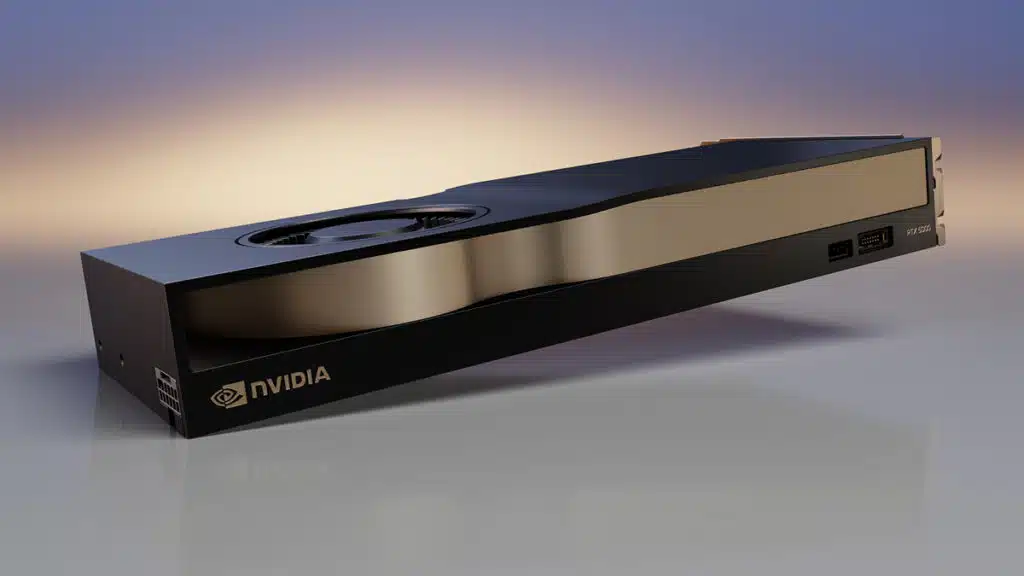
NVIDIA has expanded its lineup of desktop workstation Ada Generation GPUs with the RTX 5000, RTX 4500, and RTX 4000, a new trio of graphics cards designed to deliver what green team has described as the latest AI, graphics, and real-time rendering technology to professionals worldwide. The new NVIDIA RTX 5000 GPU is now available and shipping from HP and global distribution partners (e.g., Leadtek, PNY, and Ryoyo Electro) starting today, while the NVIDIA RTX 4500 and RTX 4000 will be available in the fall from BOXX, Dell Technologies, HP, Lenovo, and global distribution partners. RTX workstations that feature up to four RTX 6000 Ada GPUs, NVIDIA AI Enterprise, and NVIDIA Omniverse Enterprise will also be available from system builders starting in the fall, NVIDIA confirmed.
“The NVIDIA RTX 5000 Ada GPU demonstrates NVIDIA’s impressive generational performance improvements — it has significantly increased our efficiency in creating stereo panoramas using Enscape,” said Dan Stine, director of design technology at architectural firm Lake|Flato. “With the performance boost and large frame buffer of RTX 5000 GPUs, our large, complex models look great in virtual reality, which gives our clients a more comfortable and contextual experience.”
NVIDIA RTX 5000/4500/4000 Features
- NVIDIA CUDA cores: Up to 2x the single-precision floating point throughput compared to the previous generation.
- Third-generation RT Cores: Up to 2x the throughput of the previous generation with the ability to concurrently run ray tracing with either shading or denoising capabilities.
- Fourth-generation Tensor Cores: Up to 2x faster AI training performance than the previous generation with expanded support for the FP8 data format.
- DLSS 3: New levels of realism and interactivity for real-time graphics with the power of AI.
- Larger GPU memory: The RTX 4000 provides 20GB of GDDR6 memory; the RTX 4500 offers 24GB of GDDR6 memory; and the RTX 5000 boasts 32GB of GDDR6 memory — all supporting error-code correction for error-free computing with large 3D models, rendered images, simulations and AI datasets.
- Extended-reality capabilities: Support for high-resolution augmented-reality and virtual-reality devices to deliver the high-performance graphics required for creating stunning AR, VR and mixed-reality content.
The new RTX workstations offer up to four NVIDIA RTX 6000 Ada GPUs, each equipped with 48GB of memory, and a single desktop workstation can provide up to 5,828 TFLOPS of AI performance and 192GB of GPU memory. Depending on user needs, systems can be configured with NVIDIA AI Enterprise or Omniverse Enterprise to power a breadth of demanding generative AI and graphics-intensive workloads.
NVIDIA AI Enterprise 4.0, announced separately today, now includes NVIDIA NeMo, an end-to-end framework for building and customizing foundation models for generative AI, NVIDIA RAPIDS libraries for data science, as well as frameworks, pretrained models and tools for building common enterprise AI use cases, including recommenders, virtual assistants and cybersecurity solutions.
Omniverse Enterprise is a platform for industrial digitalization that enables teams to develop interoperable 3D workflows and OpenUSD applications. As an OpenUSD-native platform, Omniverse enables globally distributed teams to collaborate on full-design-fidelity datasets from hundreds of 3D applications.
Workstation users can also take advantage of the new NVIDIA AI Workbench, available soon in early access, which provides developers with a unified, easy-to-use toolkit for creating, fine-tuning and running generative AI models with just a few clicks. Users of any skill level can quickly create, test and customize pretrained generative AI models on a PC or workstation and then scale them to virtually any data center, public cloud or NVIDIA DGX Cloud.
